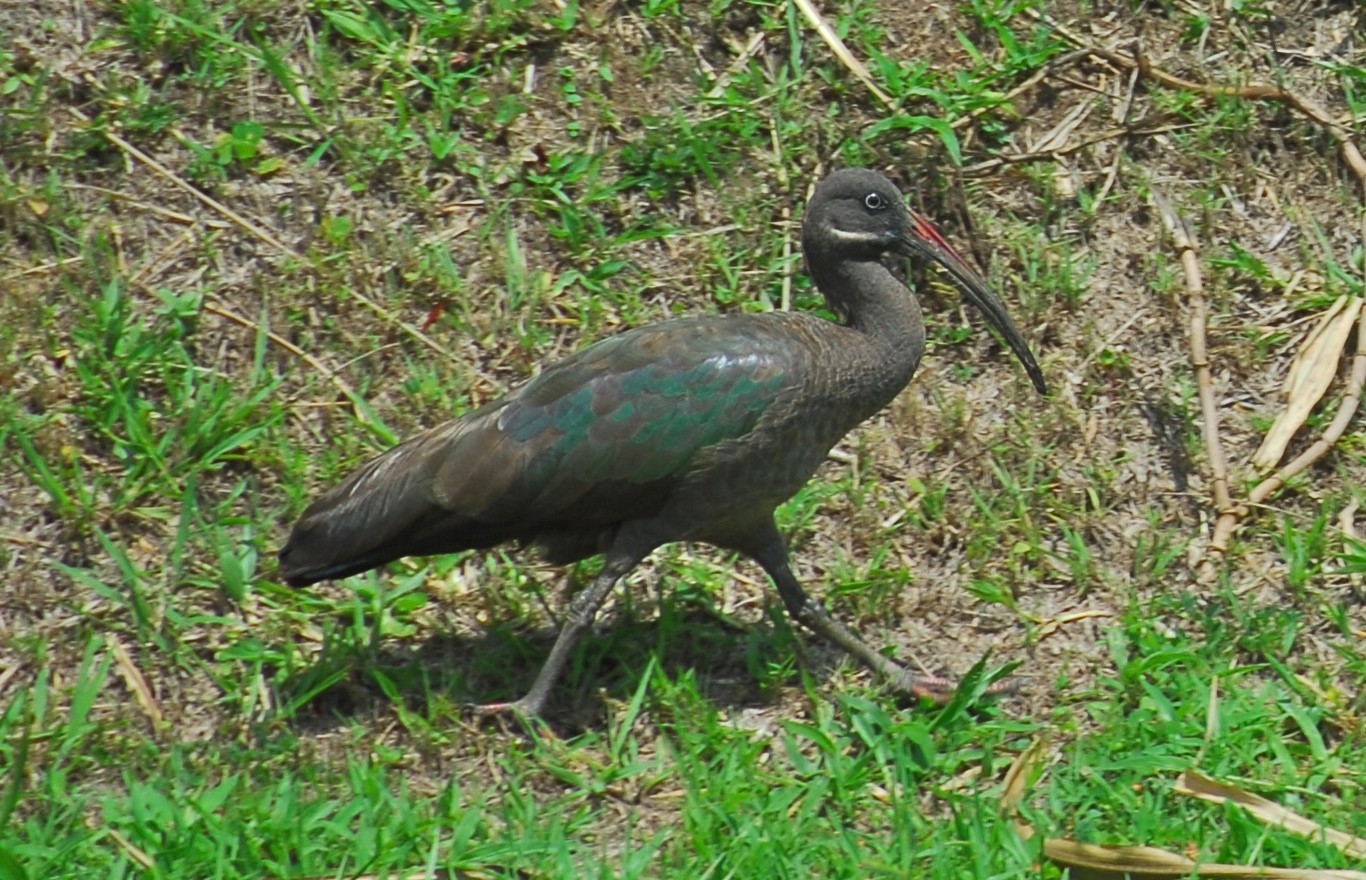Hadada Ibis
A species of African Crested and Hadada Ibises, Also known as Hadeda Ibis, Hadeda Scientific name : Bostrychia hagedash Genus : African Crested and Hadada Ibises
Hadada Ibis, A species of African Crested and Hadada Ibises
Also known as:
Hadeda Ibis, Hadeda
Botanical name: Bostrychia hagedash
Genus: African Crested and Hadada Ibises
Content
Description People often ask General Info
Description
The hadeda is a large (about 76 cm long), grey-to-partly brown species of ibis. Males and females are alike in plumage. It has a narrow, white, roughly horizontal stripe across its cheeks. This is sometimes called the "moustache" though it does not reach the mouth corners. The plumage over the wings has an iridescent purple sheen produced by optical microstructures within the feathers. The bird has blackish legs and a large grey-to-black bill but during the breeding season it has a red culmen on the basal half of the upper mandible. The upper surfaces of the toes are of a similar red during the onset of breeding. The wings are powerful and broad, enabling quick take-offs and easy manoeuvring through dense tree cover. It has an extremely loud and distinctive "haa-haa-haa-de-dah" call—hence the onomatopoetic name. The call is often heard when the birds are flying or are startled, or when the birds communicate socially, for example early in the morning in residential suburbs. While roosting they produce a single loud "haaaa". When foraging, their contact call is a low growl similar to that made by a young puppy. 
Size
76 cm
Nest Placement
Tree
Feeding Habits
Hadada Ibis's diet includes insects, crustaceans, earthworms, snails, small reptiles, and frogs, obtained by surface picking or probing soft ground.
Habitat
The hadada Ibis inhabits a variety of environments across Sub-Saharan Africa, thriving in open grasslands, savannas, and areas adjacent to water bodies such as wetlands, wooded streams, and riverbanks. They show a preference for habitats with soft, moist soil to probe for food. Hadada Ibis are also present in open woodlands, forest edges, and primary rainforests in some regions. Adaptability has led them to prosper in human-altered landscapes including urban parks, irrigated agricultural lands, and suburban gardens, expanding their original range significantly.
Dite type
Omnivorous
People often ask
General Info
Feeding Habits
Bird food type
Distribution Area
The hadeda ibis occurs throughout Sub-Saharan Africa in open grasslands, savanna and wetlands, as well as urban parks, school fields, green corridors and large gardens. This bird occurs in Sudan, Burundi, Ethiopia, Senegal, Uganda, Tanzania, Gabon, Democratic Republic of Congo, Cameroon, Gambia, Kenya, Somalia, Lesotho, Swaziland, Botswana, Mozambique, Zimbabwe, Namibia, and South Africa. The distribution range of the hadeda has increased in southern Africa by nearly two and a half times in the 20th century following the introduction of trees in parts that were treeless. Irrigation projects may have also helped in their expansion as they appear to need moist and soft soils in which to probe for food. 
Species Status
As the hadeda ibis is widespread and common throughout its large range, it has been evaluated as Least Concern on the IUCN Red List. 
Scientific Classification
Phylum
Chordates Class
Birds Order
Pelicans and Relatives Family
Ibises and spoonbills Species
Hadada Ibis 